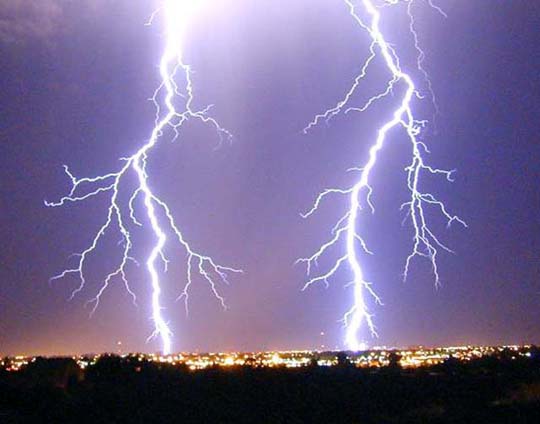No. In one of our earlier articles,, we talked about how the basic construction of a stucco house makes it hard for cell signals to get in. The term we used was “Faraday cage,” and it’s a metal cage that surrounds something, making it impossible for certain kinds of electricity to get through.
How does this work?
You might have seen something like this at your local science museum, where a lab-coated museum worker stood in a metal cage while artificially-created lightning struck him or her. In fact, with a little work on YouTube, we found this one from Boston’s Museum of Science:
So, if the person in the video was safe because of the metal cage, does that mean you’re safe in a stucco home? Again, the answer is…
No.
Why? There are three reasons. First of all, the cage in the video wasn’t just a Faraday cage, it was a lightning rod. In other words, it was the tallest metal object close to the lightning source and it was properly grounded. Proper grounding is massively important. If your stucco mesh is grounded, it’s just a happy accident; it’s not necessary to ground stucco mesh and it’s not usually done.
Second of all, in order for a faraday cage to work for lightning, it would have to face the source of the lightning, in other words the sky. Stucco mesh isn’t used in roofs.
Third, and most importantly, the wires in stucco mesh are so thin that even if they initially protected you, they would quickly melt, most likely catching your house on fire while they did.
Grounding is important
Whether or not you live somewhere where lightning strikes are common, the tallest metal object on your house, which is probably your dish or antenna, should be properly grounded. This is inexpensive and quick to do, and we offer a guide on just what you’ll need. Although we’d prefer you order from us at solidsignal.com, the parts are also available at most home stores so don’t hestitate to put in proper grounding if you don’t already have it.
Grounding can be pretty simple. It’s often a matter of connecting grounding wire to something high up on your house. From there you can run the wire to a ground rod stuck into the actual dirt or connecting to a source of house grounding like a cold water pipe or the grounding system of your breaker box. Grounding rules are dictated by your local town, city, or county, so they vary from place to place. A local contractor or the permit center of your local city hall can help you find the rules. Some grounding is always better than no grounding, of course. Still, it’s smart to get it right. Those rules are there for a reason.
And, in case we haven’t been clear, don’t count on your stucco mesh to save you. Because it won’t. Stucco mesh is great for what it’s intended for… providing a backer for stucco. It’s also pretty decent at blocking cell signals. But as a way to ground, it’s really pretty bad.





